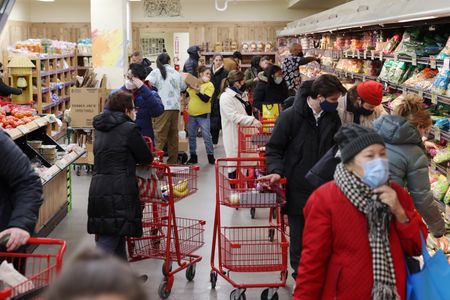WASHINGTON (Reuters) – U.S. business inventories increased in November as higher interest rates depressed sales, boosting the inventory-to-sales ratio to the highest level in nearly two years.
Business inventories rose 0.4% after gaining 0.2% in October, the Commerce Department said on Wednesday. Inventories are a key component of gross domestic product.
November’s increase in inventories was in line with economists’ expectations. Inventories increased 15.1% on a year-on-year basis in November.
The pace of inventory accumulation has slowed considerably from the robust pace in late 2021 and early 2022 because of improved supply, and ebbing demand for goods as the Federal Reserve aggressively raises interest rates to quell inflation.
Retail inventories rebounded 0.1% in November as estimated in an advance report published last month. They fell 0.4% in October. Improved supply as well as a shift in spending back to services have added to excess merchandise at retailers, forcing some to offer price discounts and hold back on placing more orders until they have cleared the unwanted stock.
Motor vehicle inventories accelerated 1.1%, instead of 1.2% as estimated last month. They increased 0.4% in October. Retail inventories excluding autos, which go into the calculation of GDP, fell 0.3% as estimated last month.
Wholesale inventories increased 1.0% in November. Stocks at manufacturers were unchanged.
Inventories have been a drag on GDP for two straight quarters, subtracting more than one percentage point in the July-September quarter. The economy grew at a 3.2% annualized rate in the third quarter. Growth estimates for the fourth quarter are as high as a 4.1% pace.
Business sales fell 0.8% in November after rising 0.4% in October. At November’s sales pace, it would take 1.35 months for businesses to clear shelves. That is the longest since December 2020 and was up from 1.33 months in October.
(Reporting by Lucia Mutikani; Editing by Andrea Ricci)

